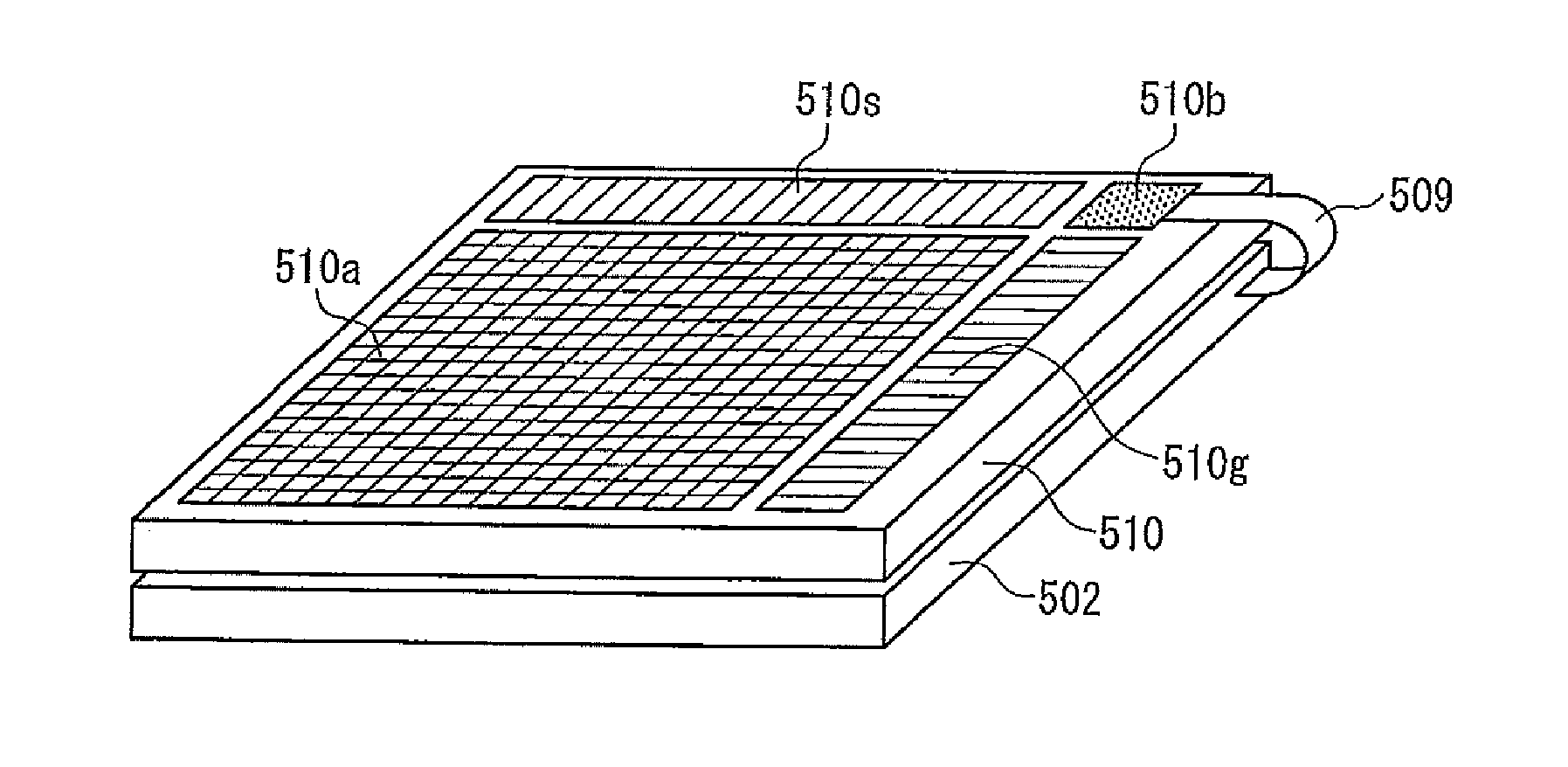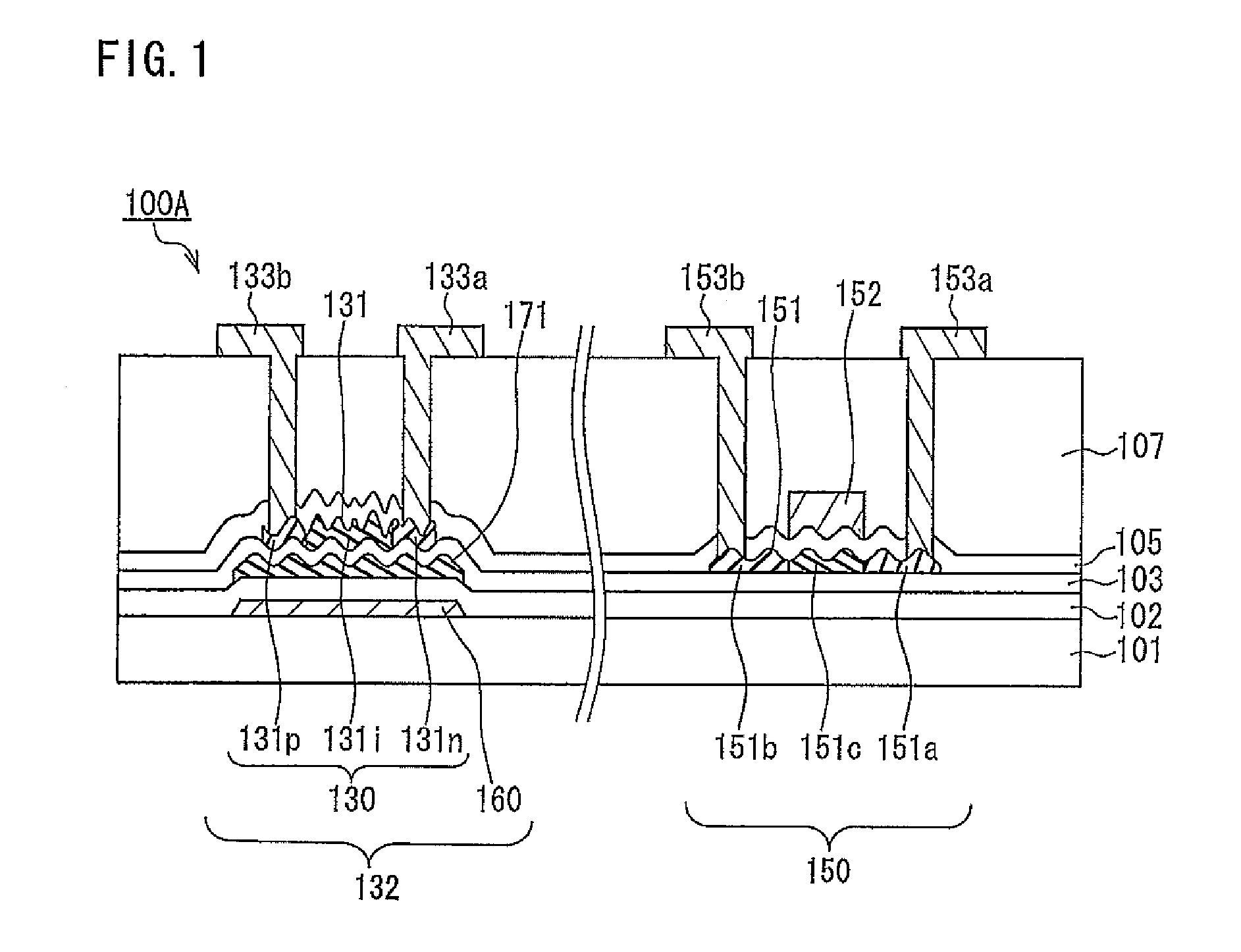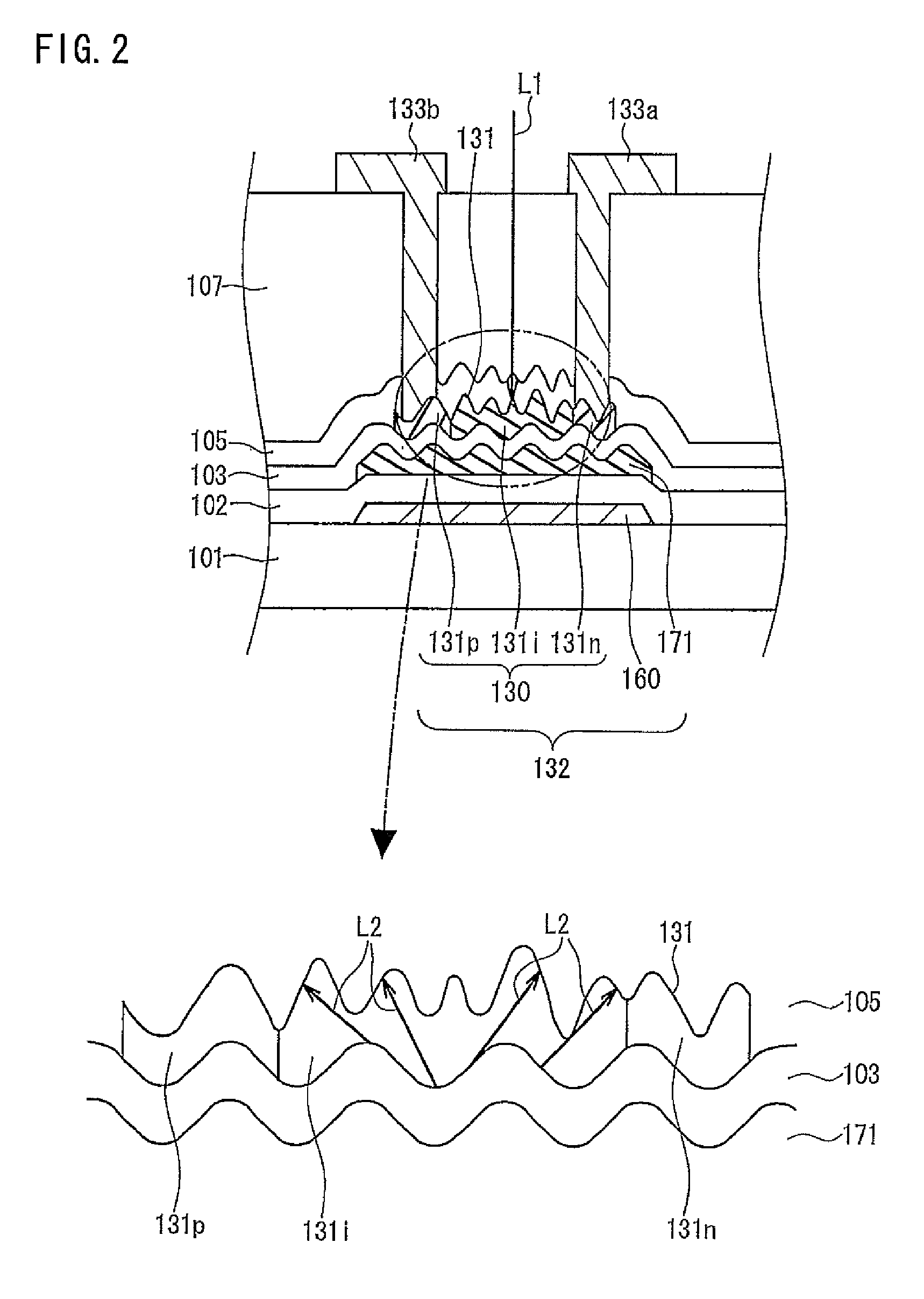Photosensor, semiconductor device, and liquid crystal panel
a semiconductor device and photosensor technology, applied in semiconductor devices, radio frequency controlled devices, instruments, etc., can solve the problem of not providing sufficient light detection sensitivity, and achieve the effect of improving light detection sensitivity and light use efficiency
- Summary
- Abstract
- Description
- Claims
- Application Information
AI Technical Summary
Benefits of technology
Problems solved by technology
Method used
Image
Examples
embodiment 1
[0055]FIG. 1 is a schematic cross sectional view of a semiconductor device 100A according to Embodiment 1 of the present invention. The semiconductor device 100A includes: a photosensor 132 having a substrate 101, a thin film diode 130 formed above the substrate 101 with interposed base layers 102 and 103 therebetween as insulating layers, a polycrystalline silicon layer (silicon layer) 171 provided between the substrate 101 and the thin film diode 130, and a light-blocking layer 160 provided between the substrate 101 and the polycrystalline silicon layer 171; and a thin film transistor 150. The substrate 101 is preferably translucent. To simplify the drawing, FIG. 1 only shows a single photosensor 132 and a single thin film transistor 150; however, a plurality of photosensors 132 and a plurality of thin film transistors 150 may be formed on a common substrate. Further, to facilitate understanding, FIG. 1 shows a cross section of the photosensor 132 and that of the thin film transis...
embodiment 2
[0105]FIG. 4 is a schematic cross sectional view of a semiconductor device 100B according to Embodiment 2 of the present invention. In FIG. 4, the same components and locations as in the semiconductor device 100A of Embodiment 1 are labeled with the same numerals and their description will be omitted. A semiconductor device 100B of Embodiment 2 will now be described focusing on the differences between Embodiments 1 and 2.
[0106]In Embodiment 2, an n-type region 171n and a p-type region 171p are formed in the polycrystalline silicon layer 171, and an electrodes 133a and 133b are electrically connected with the n-type region 171n and the p-type region 171p, respectively. An intrinsic region 171i is provided between the n-type region 171n and the p-type region 171p.
[0107]In such a structure, the polycrystalline silicon layer 171 may function as a second thin film diode 170. Accordingly, a photosensor 134 including a double-structure thin film diode having a first thin film diode 130 an...
embodiment 3
[0117]FIG. 7 is a schematic cross sectional view of a semiconductor device 100C according to Embodiment 3 of the present invention. In FIG. 7, the same components and locations as in the semiconductor device 100B of Embodiment 2 are labeled with the same numerals and their description will be omitted. A semiconductor device 100C of Embodiment 3 will now be described focusing on the differences between Embodiments 2 and 3.
[0118]In Embodiment 3, a semiconductor layer (first semiconductor layer) 132 constituting the thin film diode 130 is made of amorphous silicon and thus it is different from the semiconductor layer 131 of Embodiment 2 made of a polycrystalline semiconductor (polycrystalline silicon). The semiconductor layer 132 made of amorphous silicon includes an n-type region 131n and a p-type region 131p as well as an intrinsic region 131i between the n-type region 131n and the p-type region 131p.
[0119]The semiconductor device 100C including a semiconductor layer 132 made of amo...
PUM
| Property | Measurement | Unit |
|---|---|---|
| surface roughness | aaaaa | aaaaa |
| surface roughness | aaaaa | aaaaa |
| temperature | aaaaa | aaaaa |
Abstract
Description
Claims
Application Information
 Login to View More
Login to View More - R&D
- Intellectual Property
- Life Sciences
- Materials
- Tech Scout
- Unparalleled Data Quality
- Higher Quality Content
- 60% Fewer Hallucinations
Browse by: Latest US Patents, China's latest patents, Technical Efficacy Thesaurus, Application Domain, Technology Topic, Popular Technical Reports.
© 2025 PatSnap. All rights reserved.Legal|Privacy policy|Modern Slavery Act Transparency Statement|Sitemap|About US| Contact US: help@patsnap.com



